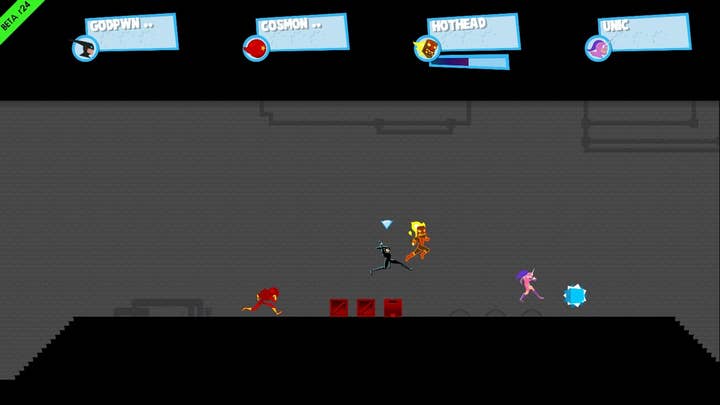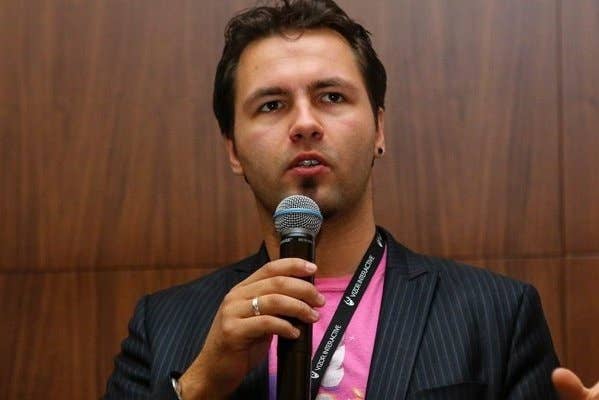tinyBuild: Indiepocalypse? What Indiepocalypse?
CEO Alex Nichiporchik took overcrowding on Steam as incentive to improve, expanding into mobile, console, publishing and esports
The Indiepocalypse is nigh. That's the unpleasant and entirely plausible scenario that the industry's more pessimistic analysts claim lies ahead. Some have argued against the possibility, displaying a foresight and confidence that I evidently lack. The evidence that there are too many developers sharing too small a slice of the available revenue is both voluminous and convincing. Every time a blow is struck for those building small businesses in PC and mobile - the Steam Discovery Update, for example - it seems only to highlight the scale of the problem at hand.
Alex Nichiporchik, the CEO of tinyBuild, was the most provocative respondent to an article published at the time of Apple's recent dabbling with App Store curation. "It's been a long time coming," he said. "Apple's move shows that they're serious about reversing the race to the bottom, and putting companies that treat players like cattle on the backseat.
"Everyone's looking back at this golden age of indie games...Times change. Everyone's making games now"
Founded in 2011, tinyBuild initially built its business on Steam. The company's debut release, No Time To Explain, was one of the first games to make it through Greenlight, while SpeedRunners was similarly quick to capitalise on the opportunity presented by Early Access. "If you were on Steam in 2011, it didn't matter. You're done," Nichiporchik says when we meet in person at GDC Europe in August. "If you were on Steam the press comes to you, everyone comes to you."
That is now a distant memory, however. Nichiporchik highlights the "heart-breaking" post-mortems that are published online with increasing frequency, great ideas and years of work greeted with indifference and the deafening sound of no cash-registers ringing. It takes more than just a good game to succeed in a marketplace like Steam now, he says. "It might look great and play great, but there's so much noise."
When faced with so much uncertainty about the future, it is tempting to obsess over the tiniest details, to look for ways to game the system. For Nichiporchik and tinyBuild, the spectre of an 'Indiepocalypse' induced by overcrowding in its most familiar storefront had the opposite effect. It was an incentive to grow, to diversify, and to create a company with a future that wasn't dependent on any single marketplace.

"Everyone's looking back at this golden age of indie games, when you released a game and it got coverage and you made a ton of money," he says. "Times change. Everyone's making games now. All of the engines are competing on which one makes it easiest to make a game. It's great for the industry and for creativity, but it does mean that unless you take that extra step or do something special it's going to be really, really difficult for you."
In the space of just two-and-a-half years, tinyBuild has progressed from getting a game through Steam Greenlight to publishing a string of mobile titles and, more recently, its first console game. In targeting multiple platforms, Nichiporchik says, tinyBuild has noticed a surprising amount of crossover between communities, with sales and activity on one platform generally leading to more sales and more activity on another. "We released Divide By Sheep on Steam and on mobile, and there was a cumulative effect," he says. "People playing it, streaming it and making user videos on Steam, and that translating directly into sales for mobile."
"I hope that all of the areas that we touch now will all converge into something bigger"
This is consistent with the "mobile last" strategy FlowPlay's Derrick Morton memorably put forward at Casual Connect USA, and Nichiporchik believes that it works best with the right kind of game supported by the right kind of community. As a company, he says, tinyBuild prefers to "concentrate on fewer things" wherever possible, and spend more time on making sure those things are worthy of that focus. In terms of getting exposure for your products with limited resources at this point in time, that means YouTubers and Twitch Streamers. Whenever tinyBuild has handled a game that chimes with the leaders of these new media platforms, there has been an "instant correlation" between coverage and sales.
"What I hope will happen with the business is that all of the areas that we touch now, that we're getting experience in, will all converge into something bigger," he says, and conveniently enough, the company has just received persuasive proof that it is doing just that. SpeedRunners, the modest success of which has helped to fund this current period of expansion, has been approved as an official ESL esport. It now breathes the same rarefied air as Dota 2, Counter-Strike: GO and many other games made by far larger companies with far more resources.
It was all achieved, Nichiporchik says, through a mix of tinyBuild's established strengths and the lessons it has learned from marching into unfamiliar territory. The game itself is an ESL esport with no server infrastructure, instead using distributed networking to allow players to compete online. Getting that balance and performance right is the main reason that SpeedRunners has been in Early Access for two years. The features and the core gameplay have remained the same, but tinyBuild has been aiming for a standard that would be acceptable in the esports world.

Marketing the game as an esport was bootstrapped in a similar fashion. Resources were focused on building close relationships with smaller, local events, including "a dozen comic-cons around the US. Eventually, tinyBuild prepared a "show build" of the game that it offered to send to event organisers, with no official representative from the company present.
"We say, 'Here is a build. Just put it on your machine, you don't need any instructions, and people will play it.' They think that won't happen, but it does. It has bots running, so you can pick up the controller and you instantly figure out how to play. Then, the organisers at those events, they realise they have a crowd cheering for a game and the developer isn't even there. We just send them the prizes."
The resulting grassroots enthusiasm was enough for set the doors to the esports world swinging open. In one of the crowds at one of those cons, a pair of genuine ESL athletes first came into contact with SpeedRunners. They loved it, ultimately becoming cheerleaders for its potential as an esport, spreading positivity in much the same way as streamers and YouTubers. "The first cup we did was just because of them," Nichiporchik says. "They were online, micro-managing everything, making sure everything went smoothly. We're now working on a series of tournaments throughout the summer."
"We're out of our league, but I think we've been out of our league for a while"
None of which means that the Indiepocalypse won't ultimately happen in one form or another, or even that tinyBuild won't be affected by whatever the hell it proves to be. But in meeting that uncertainty with bold choices and sensible execution, it will take a hell of a lot more than Steam's crowded storefront to reverse its fortunes.
"It makes us look more serious," Nichiporchik says. "I noticed that, in the comments after the ESL announcement, there were two camps: the people who actually played SpeedRunners, who were defending it, and the others saying, 'Oh, what's this casual thing doing here?' You could see the battle between the people who do understand the game and the people that don't.
"It puts a lot of pressure on the team, because, right now, any kind of update that we roll out needs to be more and more thoroughly tested. But that's going to be a positive thing for us. We're more accountable now. Any change to the competitive part of the game is going to need some serious thought.
"We're out of our league - by far - but I think we've been out of our league for a while. Even at conventions, our booth is right by Ubisoft and the other AAA publishers. We're taking the same approach with esports."

